In the collective imagination Courmayeur is, like many other mountain resorts such as Cortina dAmpezzo and Sankt Moritz, a winter resort destination to rely on to undertake high-altitude skiing.
To dispel this myth, I wanted to visit and read up on summer Courmayeur and was fascinated. While validating that the Valdostan town’s main source of revenue and urban development has been and still is winter tourism, its enchanting location also makes it a beautiful summer star, framed by the peaks of Mont Blanc.
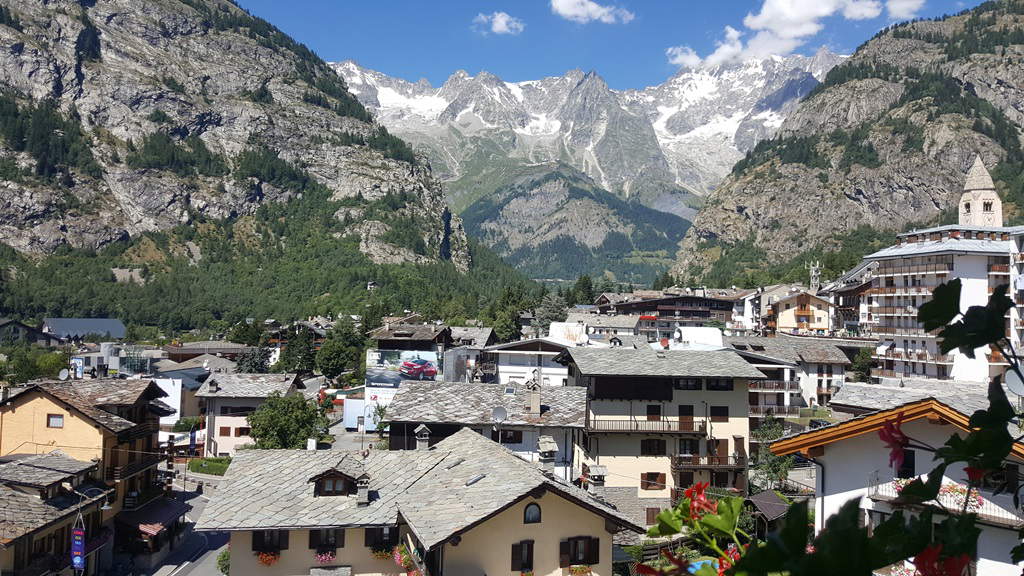 |
| View of Courmayeur |
The history of the Curia Major from medieval times has always been inextricably linked to the great mountain massif, both in terms of its origins (near some thermal springs) and subsequent mountaineering exploits. In fact, Courmayeur is home to many world-renowned guides and the headquarters of the first Italian society of mountain guides. Inside the Duca degli Abruzzi Alpine Museum, right in the center of town and set up inside the House of the Guides, the golden age of mountaineering is illustrated through a series of equipment, photographs, documents and memorabilia from expeditions around the world.
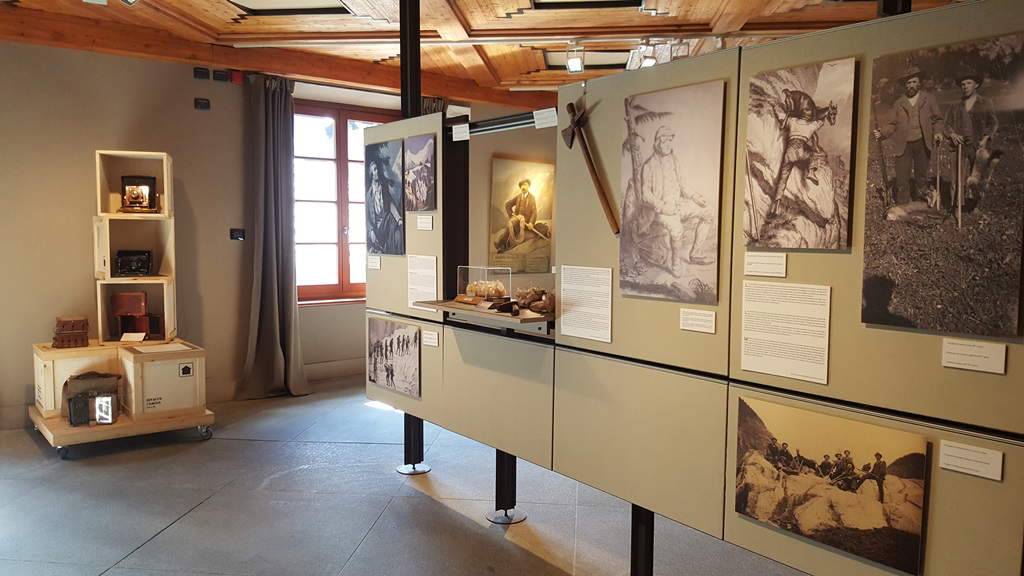 |
| A room in the Duca degli Abruzzi Alpine Museum |
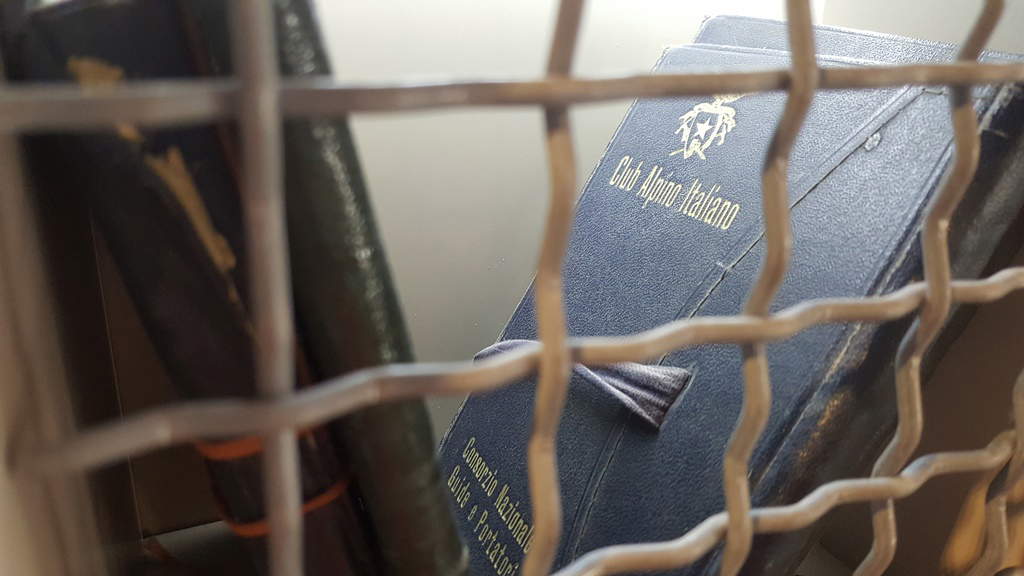 |
| Detail from the Alpine Museum |
The new premises of the Jardin dellAnge, on the other hand, are home to the Aosta Valley section of the Mont Blanc Cross-Border Museum, a place for reflection and information on the identity of the people of Upper Savoy and the Aosta Valley.
The town’s two main religious buildings are the parish church dedicated to the patron saint Saint Pantaleon and the small shrine of Notre-Dame de Guérison, among the best known in the Aosta Valley. The latter was demolished in 1816 by the inexorable advance of the nearby Brenva glacier: rebuilt in 1867, the shrine became a popular place of worship thanks to the Virgin’s thaumaturgic reputation.
From the built-up area of Courmayeur or its hamlets it is possible to take several routes in the surrounding valleys (Val Veny and Val Ferret in primis), or via the brand-new Skyway cable car (inaugurated in 2015 with 360-degree revolving cabins) climb up to the glaciers of Mont Blanc, the Mer de Glace acting as a natural border with France. Reaching punta Helbronner at 3,466 meters, if desired it is possible to descend via another cable car to Chamonix.
From these altitudes, the views are spectacular down the valley toward the glaciers and spires of Europe’s highest massif: you can see the 4,808-meter peak or theAiguille Blanche, the Giant’s Tooth and the Grandes Jorasses, to name a few.
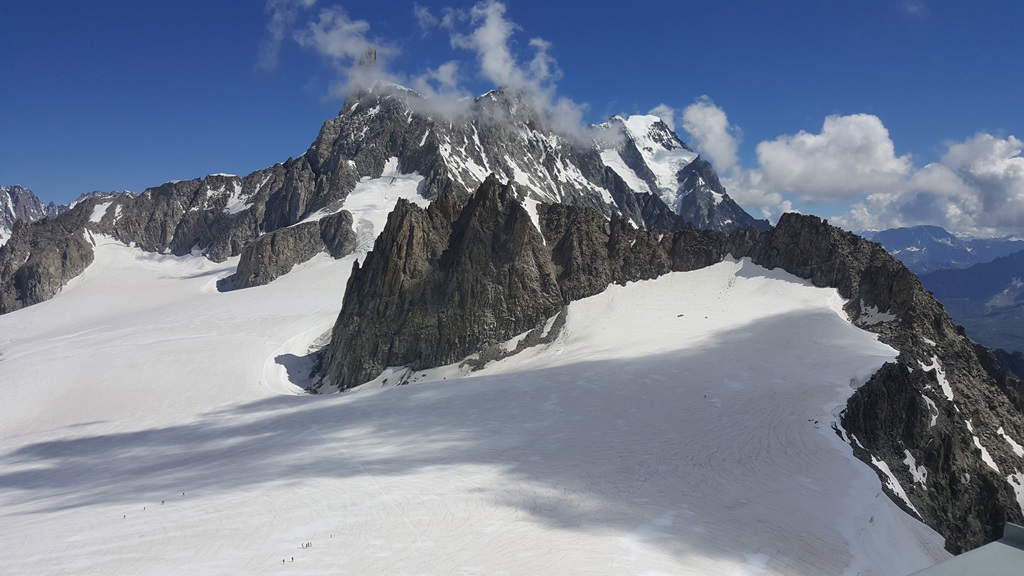 |
| View of Mont Blanc |
 |
| Panorama from Mont Blanc |
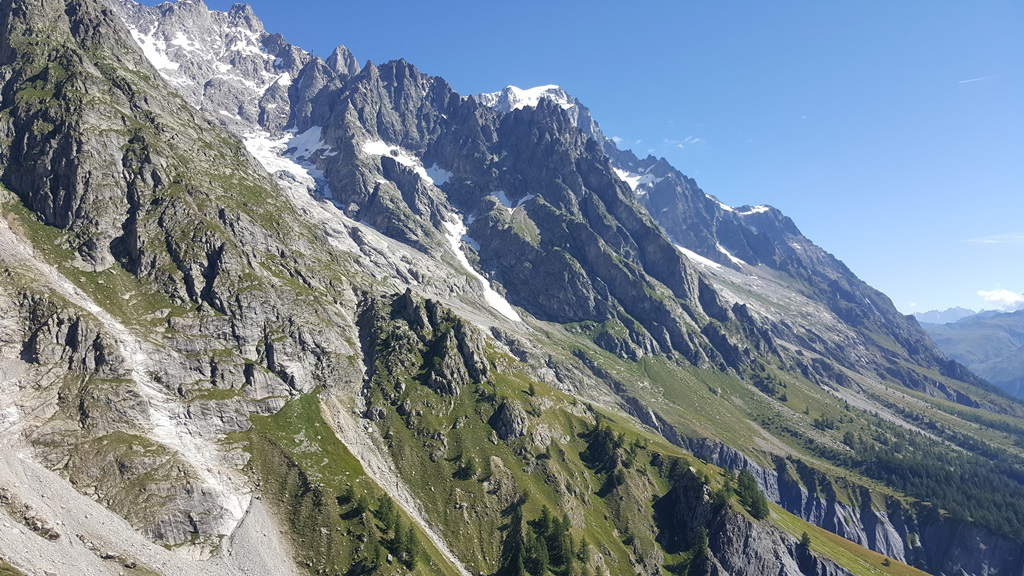 |
| Mont Blanc Massif |
On the Italian side, on the other hand, it is possible to stop at the altitude of 2,173 meters, where one can visit in the summertime the Saussurea Botanical Garden, the highest in Europe, which is home to more than 800 plant species from Mont Blanc and mountain groups from around the world.
Descending again to the altitude of 1,224 meters, the altitude at which Courmayeur is located, it is possible to stop at one of the many typical inns, where one can begin the journey through the flavors of Valle d’Aosta. You certainly cannot mark (in any season) a warm polenta concia (i.e., enriched with butter and fontina cheese), continue with the many cheeses, sausages such as the bodeun of Morgex or the highly fragrant jambon de Bosses, and seasoned meats such as sauseusse or motsetta (or mocetta), the lard, soups made with rye bread, apples and berries, shingles or creichen (a cake rich in butter and sugar, a typical Valdigne specialty, made with the original recipe handed down from the old farmers).
It should not be forgotten that in this area, on the hills between Morgex and La Salle, grow the highest vineyards in Europe that reach up to 1,200 meters above sea level and from which Blanc de Morgex et de La Salle, a fine white wine that was awarded the AOC Valle dAosta in 1985, and Chaudelune, a passito made from a late harvest of grapes that have already experienced the first colds of winter to give the wine all their warmth.
Enjoy your meal and have a good trip!
Warning: the translation into English of the original Italian article was created using automatic tools. We undertake to review all articles, but we do not guarantee the total absence of inaccuracies in the translation due to the program. You can find the original by clicking on the ITA button. If you find any mistake,please contact us.